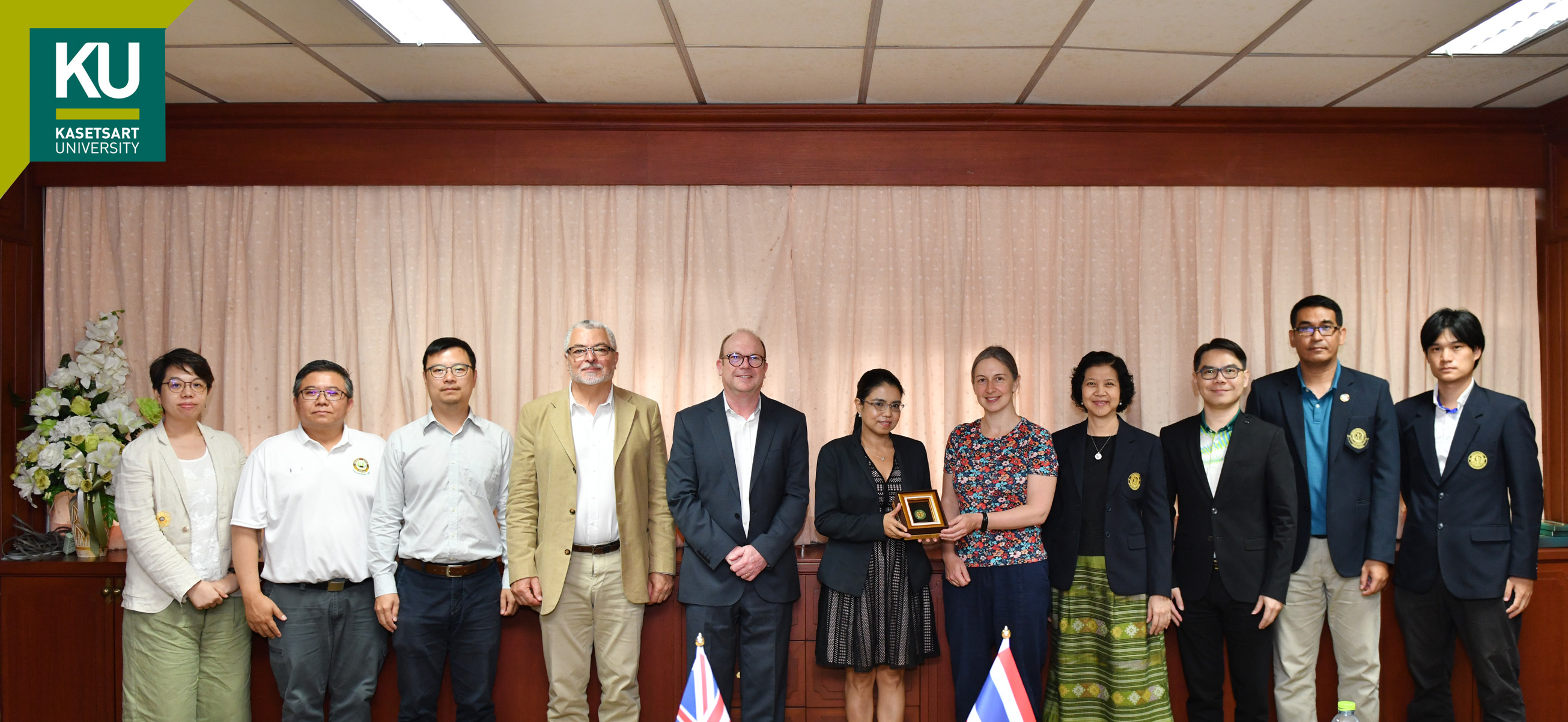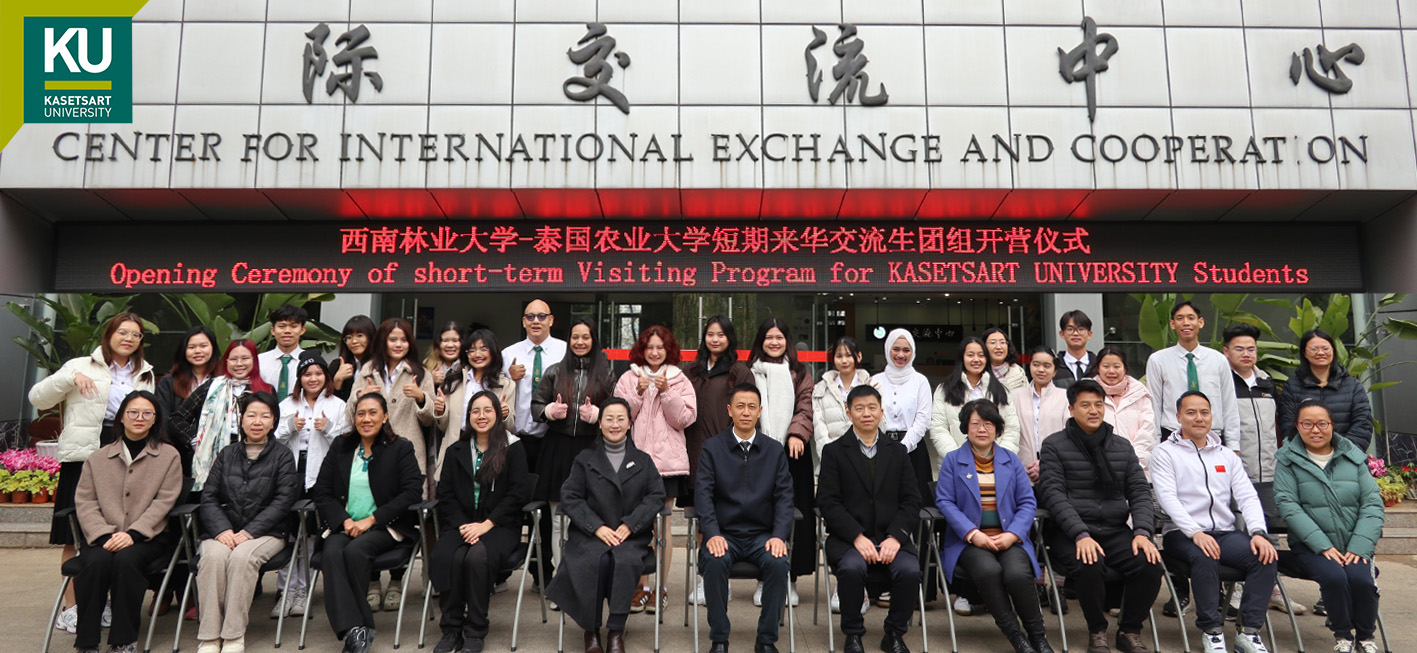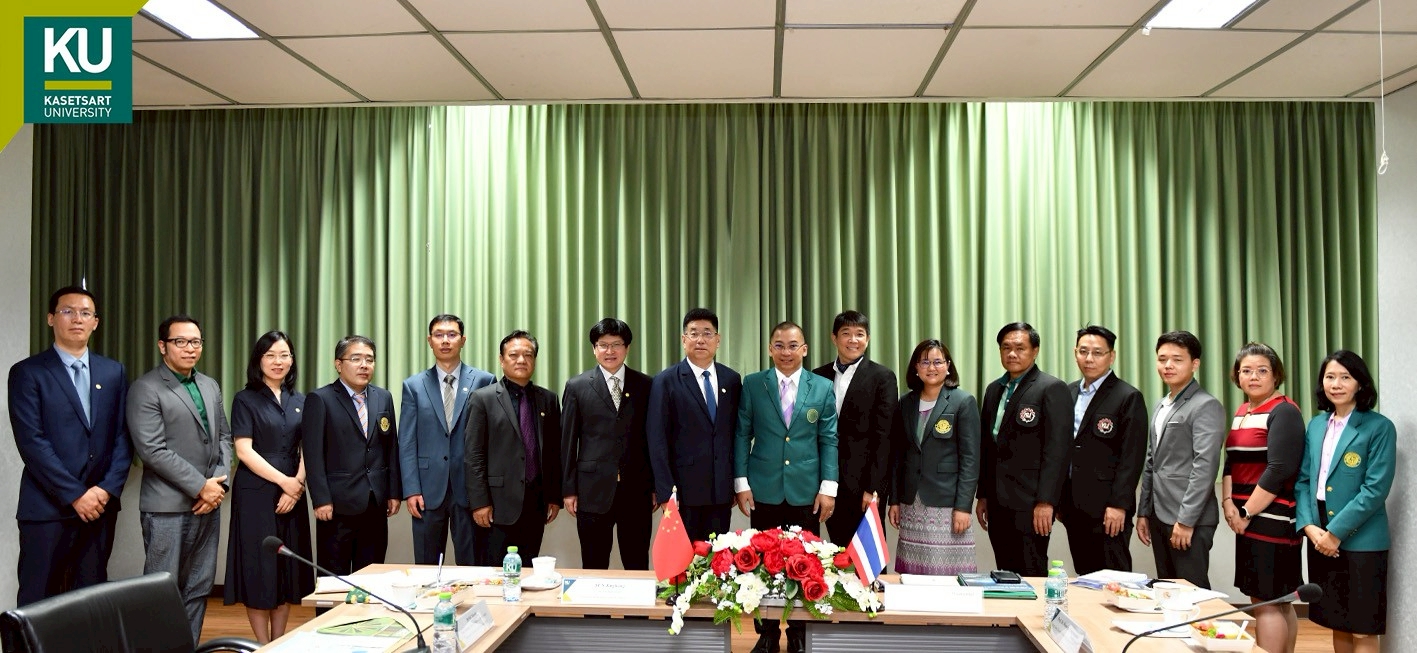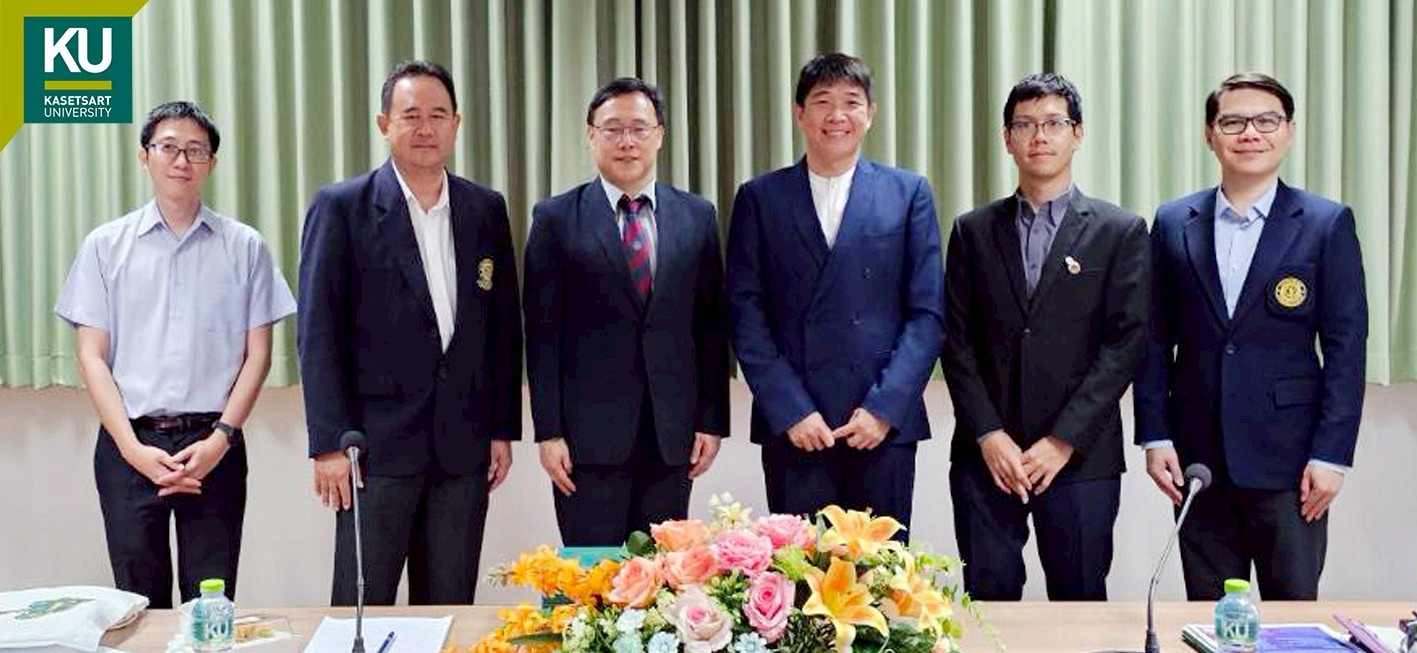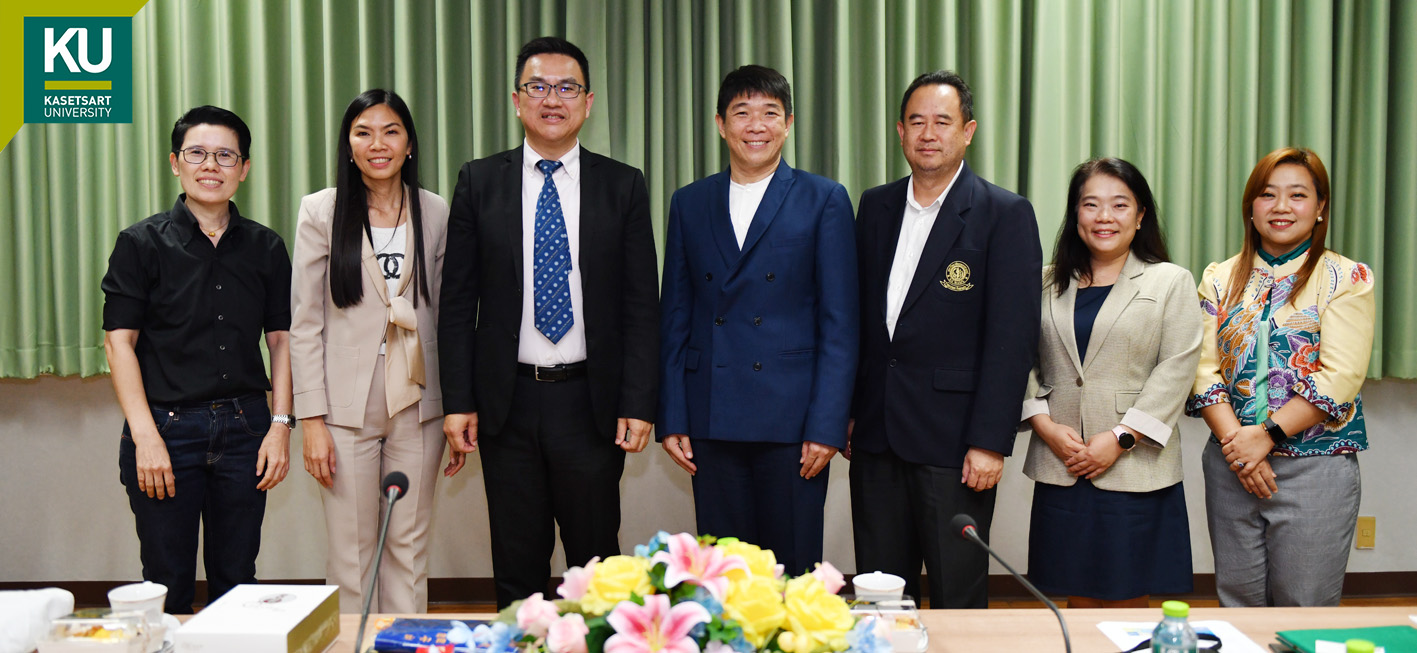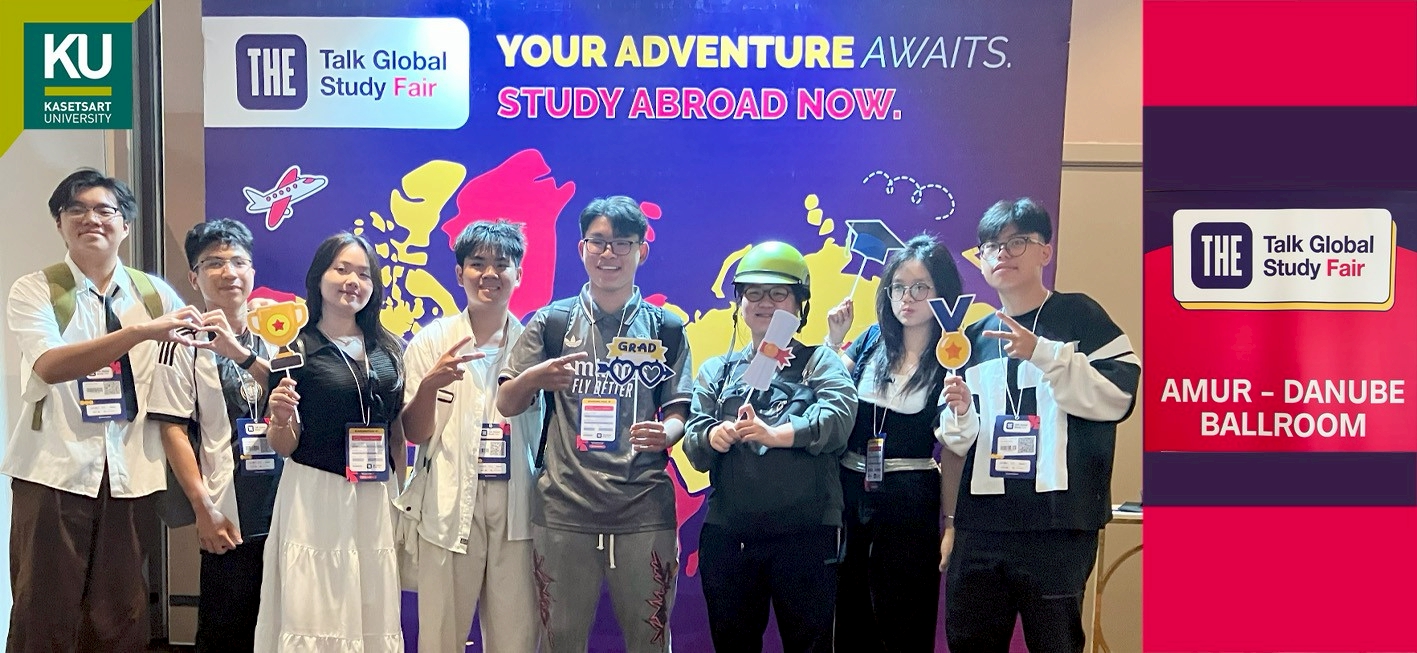On Thursday, June 6, 2024, at
9:30 a.m., in Meeting Room 9, 2nd Floor of the Golden Jubilee Administration
and Information Center Building at Kasetsart University, Associate Professor
Dr. Chamaipak Maiklad, Assistant to the President for International Affairs, presided
over as the chair of the Welcoming Remarks along with the administrators and
faculty members, including Professor Dr. Arinthip Thamchaipenet, Associate Dean
for Research and International Affairs, the Faculty of Science; Assistant
Professor Dr. Ratcha Chaichana, Deputy Dean for International Relations,
Faculty of Environment; Assistant Professor Dr. Passorn Wannaphinit, Department
of Genetics, Faculty of Science; Assistant Professor Dr. Piya Kittipadakul,
Department of Agronomy, Faculty of Agriculture; Associate Professor Dr.
Supachai Vuttipongchaikij, Deputy Head of the Department of Genetics, Faculty
of Science; and personnel from the International Affairs Division. They
welcomed the delegation from the University of York, United Kingdom, led by
Professor Neil C. Bruce, Director of the CNAP Research Center, along with
Professor Lindsay Stringer, Director of the YESI Research Center, and Dr.
Leonardo Gomez, Senior Research Fellow, CNAP, Department of Biology, on the
occasion of their official visit to Kasetsart University.
Associate Professor Dr. Chamaipak
Maiklad, Assistant to the President for International Affairs, welcomed the
delegation and mentioned that this is a great opportunity to meet and discuss
with representatives from the University of York to promote and support
academic cooperation and joint research between the two universities both
presently and in the future, especially in the fields of Agricultural
Biotechnology and Genetics.
Following this, Professor Neil C.
Bruce, Director of the CNAP Research Center, expressed his gratitude and
pleasure in meeting with Kasetsart University administrators. He described that
the Centre for Novel Agricultural Products (CNAP) at the University of York is
a research institute focused on developing innovations in agriculture, such as
bioenergy crops, high-value plants, genetic engineering, and sustainable
agriculture. By utilizing modern technology in research, it aims to solve
agricultural and environmental problems. CNAP collaborates with industry and government
agencies to effectively apply research findings.
Next, Professor Lindsay Stringer,
Director of YESI, introduced the York Environmental Sustainability Institute
(YESI) at the University of York. This research center focuses on studying and
addressing environmental sustainability issues. By integrating
interdisciplinary research, it aims to present effective solutions to
environmental challenges such as climate change, biodiversity, and natural
resource management.
Finally, Dr. Leonardo Gomez, Senior
Research Fellow at the CNAP Research Center in the Department of Biology at the
University of York, discussed his research on the development of highly
efficient and sustainable plants. Using genetic engineering technology and
advanced biological methods, he aims to improve crop yield and durability in
response to environmental challenges. He also discussed and introduced research
carried out in collaboration with Kasetsart University and other universities
in different countries, highlighting fields of interest for future research
collaborations.
The meeting also discussed
international collaborations, such as promoting opportunities to apply for
national and global research funding and academic cooperation in various
ongoing and future research projects between the two institutions. Examples of
future collaborations include research on duckweed, cassava, and fungi.
Associate Professor Dr. Chamaipak Maiklad expressed her support and recommended
promoting collaborations with more diverse faculties or interdisciplinary
subjects in the future, such as humanities and social sciences. The University
of York has had a good relationship with Kasetsart University for a long time,
having signed a memorandum of understanding (MOU) in 2004, leading to various
joint projects such as short-term student exchanges and the exchange of
researchers and faculty members.

